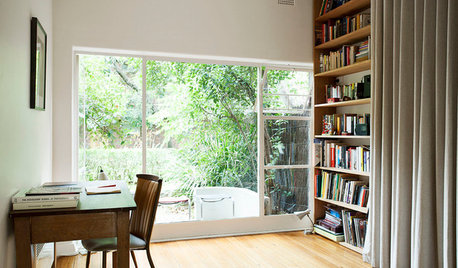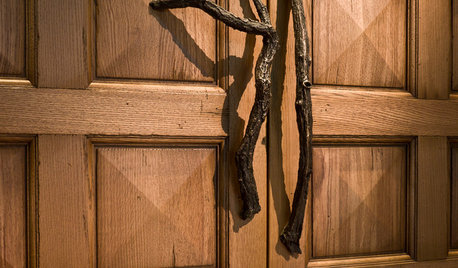Forget the history
acj7000
20 years ago
Related Stories

MOST POPULAROrganizing? Don’t Forget the Essential First Step
Simplify the process of getting your home in order by taking it one step at a time. Here’s how to get on the right path
Full Story
SMALL SPACESHouzz Tour: A Shape-Shifting Space, Cloaked in History
An architecturally significant Melbourne apartment makes the most of its limited square footage
Full Story
LIFEGive Your Home a History by Telling Your Story
Share your family's epic saga — or even just kiddie doodles — for a home that's personal, meaningful and inspiring
Full Story
WOODWoodipedia: Make a Solid Choice With Oak
Forget those low-end products of old. Red and white oak today are beautiful, versatile and relatively inexpensive
Full Story
VINTAGE STYLEHouzz Tour: Flea Market Decor Done Right in Finland
Forget fusty and dusty. Secondhand finds in this home are as bright and cheery as if they just stepped off the showroom floor
Full Story
DECORATING GUIDES7 Ways to Play With Symmetry for a Dynamic Design
Forget matchy-matchy. Today's designers are using symmetry and its opposite more loosely — and sometimes even provocatively
Full Story
LIFE8 Ways to Tailor Your Home for You, Not Resale
Planning to stay put for a few years? Forget resale value and design your home for the way you live
Full Story
HOUZZ TOURSMy Houzz: Vintage Meets Industrial in Ohio 'Laboratory'
Science memorabilia, collected vintage and ... oh, don't forget the taxidermy crow. All combine in an eclectic modern Ohio home
Full Story
HOUZZ TOURSHouzz Tour: Subtle Cape Cod Style in Los Angeles
Forget geography. It’s attitude — and an unerring eye for detail — that gives this California lair an Atlantic ambience
Full Story
DECORATING GUIDESNew This Week: 2 Rooms Bursting With Blue
Forget pops of color. These new projects on Houzz feature spaces virtually drenched in bold color to create an unforgettable look
Full Story





Cady
ginger_nh
Related Professionals
Ashland Landscape Architects & Landscape Designers · Baltimore Landscape Architects & Landscape Designers · Benbrook Landscape Architects & Landscape Designers · Port Royal Landscape Architects & Landscape Designers · Choctaw Landscape Contractors · Kaneohe Landscape Contractors · Southbury Landscape Contractors · Wallingford Landscape Contractors · West Orange Landscape Contractors · Baltimore Siding & Exteriors · Enfield Siding & Exteriors · Rockford Siding & Exteriors · Alhambra General Contractors · Chatsworth General Contractors · Montclair General Contractorsphdnc
John_D
Cady
ginger_nh
Cady
acj7000Original Author
mjsee
spectre
ginger_nh
acj7000Original Author
ginger_nh
mich_in_zonal_denial
John_D
Cady
ginger_nh
John_D
spectre
John_D
enchantedplace
Saypoint zone 6 CT
ginny12
ginger_nh
acj7000Original Author
phdnc
mjsee
spectre
ginger_nh
John_D
acj7000Original Author
mjsee
John_D
david7a_ga
Cady
John_D
acj7000Original Author
bry84
spectre
ginger_nh
mjsee
Cady
spectre
Cady
bry84
ZephirineD